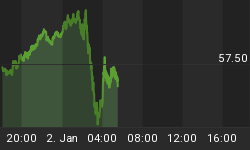Uber may be operating at a loss, and it may be facing the consequences of a tragic self-driving fatality, but that’s done nothing to sway investors from a $1.5-billion leveraged loan deal.
In fact, Uber was asking for less, but strong demand bumped the deal from $1.25 billion to $1.5 billion, which was secured this week in a sign that the U.S. leveraged loan market is hotter than ever.
But Uber went directly to institutional investors with the deal, bypassing Wall Street, which thought it was still too risky. This has caused a fair amount of Wall Street FOMO, fear of missing out, according to Bloomberg.
For those Wall Street bankers who used to take advantage of riskier leveraged loans before Obama-era restrictions, the Uber deal was mouth-watering, but would have caused too much scrutiny—too soon.
The timing just wasn’t right. While banking regulations are being rolled back and everyone’s been given a green light to take risk again, nothing’s on paper yet, and the Uber deal went ahead without them.
So, what’s so tantalizingly risky about Uber?
For one thing, it’s still operating at a loss—even if it’s moving in the right direction.
The company lost $775 million in the fourth quarter of 2017, but that’s down from its $1.02-billion loss for the same period the previous year. Net revenues increased 12 percent to $2.26 billion in the fourth quarter, compared to the third quarter of last year.
For Uber, this is a period of major growth and expansion, so it’s investing a lot in efforts to expand overseas and get self-driving cars off the ground. Related: Elon Musk’s $2.6 Billion Tesla Challenge
The latter may have just become substantially riskier.
On Sunday night, a 49-year-old Arizona woman was killed by an Uber car that was conducting self-driving tests. The vehicle was in self-driving mode, with a backup driver, and driving approximately 40 mph at night, in a dimly lit area. The victim was crossing the road with her bicycle, and the Uber did not detect her, nor slow down, according to media reports.
Arizona police are suggesting that Uber might not be at fault, and that the accident would likely have occurred with or without self-driving.
Still, the fatal accident could have far-reaching implications--but no one knows just yet. It could set back the entire self-driving segment and increase calls for regulation before it’s even out of the starting blocks.
Despite this new uncertainty, Uber secured more than it was initially targeting because investors are eyeing what they see as a major growth spurt that will win them a huge yield at the end of the day.
With the new loan, Uber has $5 billion in long-term debt, but it has a $54-billion market valuation following its January stock sale. And it’s also got brand appeal.
That Uber got more, for less, speaks volumes about the brand. It’s the first “juicier yield” deal investors have seen in a while, says Bloomberg, thanks to low interest rates that are now changing.
By Charles Benavidez for Safehaven.com
More Top Reads From Safehaven.com:

















